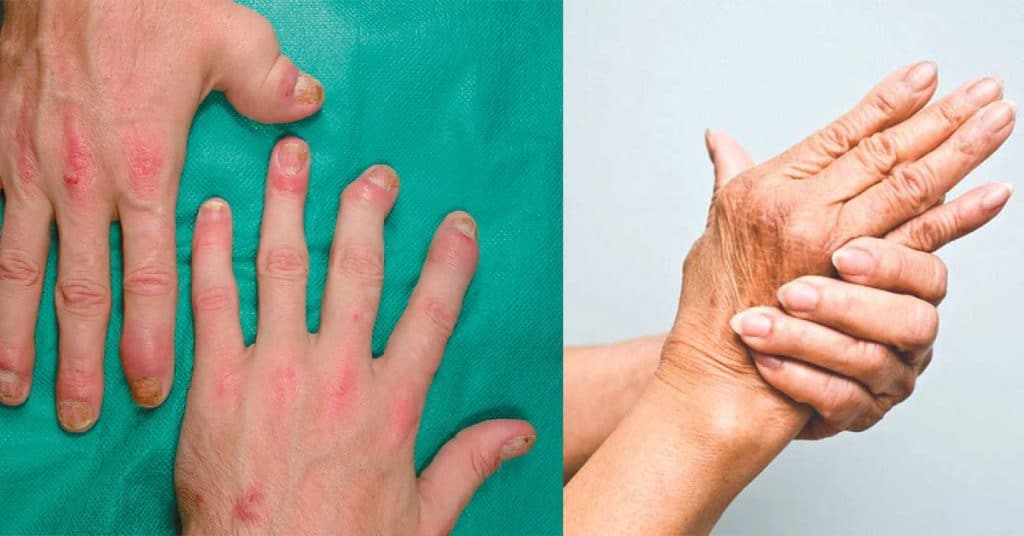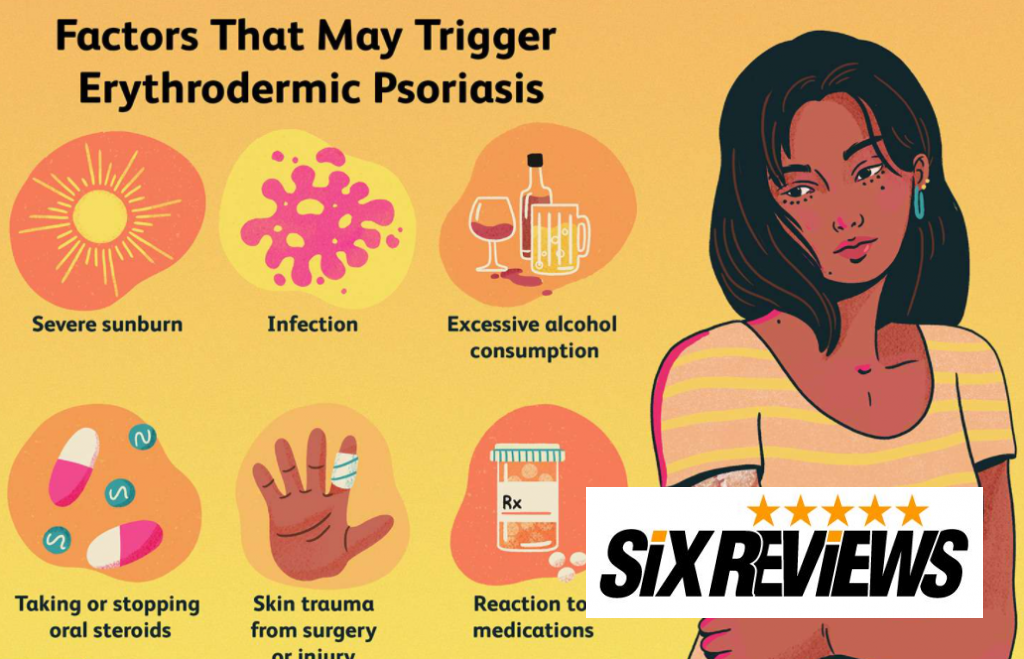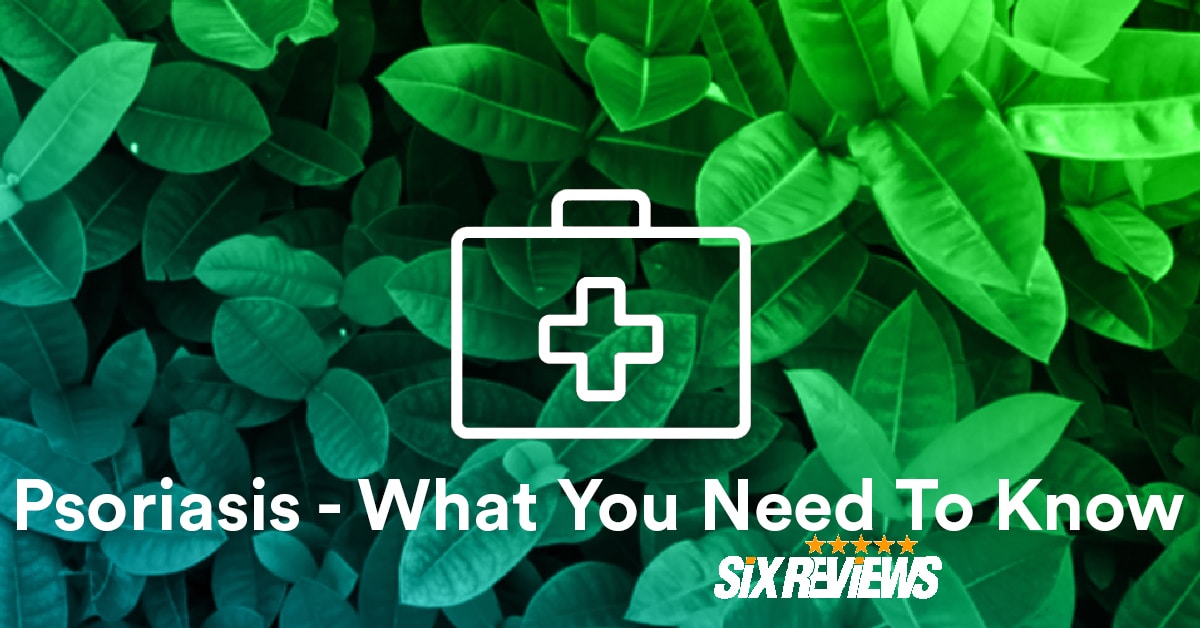Psoriasis is an autoimmune disease that causes quicker than average development of skin cells. Any infection that overwhelms the immune system will cause it. According to Healthline, this disease affects about 7.4 million persons in the US alone.[1]

People typically develop one form of psoriasis, although it is not unusual for the condition to transform into a new type. Stress and other diseases may affect these changes. At any age, you could develop psoriasis, but it is more frequent in the 50-69 age range, according to the WHO.[2] Psoriasis is quite uncomfortable and there is no proven treatment. That being said, you can treat their symptoms and improve the quality of your life with the help of medications.
Table of Contents
Guttate psoriasis, inverse psoriasis, plaque psoriasis, erythrodermic psoriasis, and plaque psoriasis are among the five main prevalent forms of psoriasis.

Plaque Psoriasis
The most common form of psoriasis to date is plaque psoriasis. 80 percent of patients with psoriasis are estimated to suffer from plaque psoriasis. Red patches on the body that are frequently glossy, white, and flaky are the first symptom of plaque psoriasis. Typically, the patches on the skin are called plaques, thus the term plaque psoriasis.
Plaques on certain parts of the body may appear isolated or they can fuse to cover wider regions of the body. Psoriasis plaques seldom surface on the forehead. Plaques usually protect parts of the body where, such as elbows and knees, the skin rubs together or spreads. But on every part of the body, including the scalp or lower back, plaques may appear. Plaques are hard to get rid of, but with the right treatment, they will fade over time. However, due to stress or other medical problems, plaque eruptions are likely to reappear.
Guttate psoriasis
Kids and adolescents are typically affected by Guttate psoriasis. Tiny red dots on the torso or arms are among the signs of guttate psoriasis. It’s the only type of psoriasis that occurs and does not require treatment as an immediate disorder. Caused by bacterial infections such as strep throat, Guttate psoriasis occurs. The signs of guttate psoriasis would possibly vanish if the root cause of the condition is treated.
Pustular psoriasis
One of the most unusual types of psoriasis is pustular psoriasis. Pustular psoriasis signs include red, itchy skin that develops rapidly to pus-filled white sores. These are white blood cells in the pus and it’s not infectious. In waves, eruptions of blisters on the skin usually occur. Adults are typically affected by pustular psoriasis and blisters may occur on any part of the body.
Palms and soles of the foot are the most prominent location for these blisters is The condition is called Palmoplantar pustulosis in this situation. In order to get proper care, people who suffer from this type of psoriasis typically have to be hospitalized. Hormonal shifts, streptococcal infections, and the use of cortisone-containing drugs typically cause outbreaks.
Erythrodermic psoriasis
As an isolated disorder, or in conjunction with pustular psoriasis, erythrodermic psoriasis can occur. There are severe signs of this type of psoriasis that involve scaly, swollen, and inflamed skin. Erythrodermic psoriasis patients also appear like victims of serious burns. This is one of the least frequent forms of psoriasis, according to the National Psoriasis Foundation, and it affects just 3 percent of patients with psoriasis.[3]

Skin rashes may occur in very large patches all over the body. The outbreak can also cover the entire body occasionally. The infection of the skin will leave the body unable to control temperatures, which can be lethal. That is why urgent medical treatment and hospitalization are required for this type of psoriasis.
Of all the forms of psoriasis known, the most painful is this one. It may have significant symptoms, such as high fever and vomiting, as well. A mixture of drugs and skin creams is usually the therapy for erythrodermic psoriasis.
Inverse psoriasis
Inverse psoriasis typically involves areas of the skin-folded body. In areas such as the armpits, groin, or under the breasts, this may surface. Due to inflammation caused by transpiration or friction, this type of psoriasis may also occur in the skin folds of obese patients. The skin outbreaks, even if they do not flake, are distinct from other forms of psoriasis. Red, smooth, and polished are the inflamed areas of tissue.
Because of the locations of the body it affects, this form of psoriasis can easily be misdiagnosed as a yeast infection. This form of psoriasis is difficult to treat because of the sensitivity of the infected skin, according to the National Psoriasis Foundation, but manifestations can be treated using steroid creams.[4]
[1]https://www.healthline.com/health/photos-types-psoriasis#guttate
[2]https://apps.who.int/iris/bitstream/handle/10665/204417/9789241565189_eng.pdf.psoriasis;jsessionid=54912784D28C9F36ECCD45471AC5775B?sequence=1
[3]https://www.psoriasis.org/about-psoriasis/types/erythrodermic
[4]https://www.psoriasis.org/about-psoriasis/types/inverse

Devoted gamer. Amateur pop culture enthusiast. Freelance zombie evangelist. Twitter fanatic. Enjoying playing the guitar, origami, and bowling. Favorite color – green and favorite music – funk.

